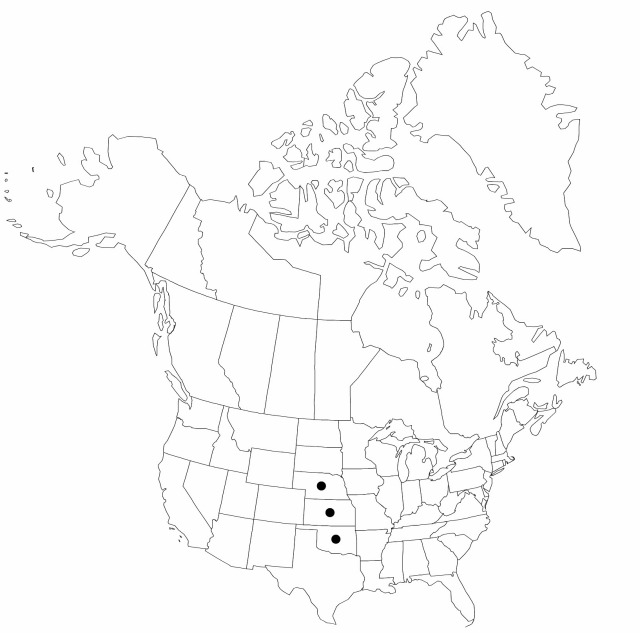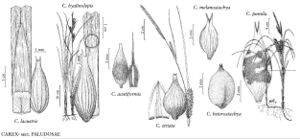Carex melanostachya
Sp. Pl. 4(1): 299. 1805.
Plants colonial; rhizomes long-creeping. Culms central, slender, trigonous, 25–65 cm, ± scabrous-angled. Leaves: basal sheaths reddish purple, apex of inner band finely ciliate; ligules 0.7–1.9 mm; blades green, M-shaped, not septate-nodulose, 1.6–3.5 (–4) mm wide, smooth abaxially, glabrous or, sometimes, lightly pubescent on apex of inner band of distal sheaths. Inflorescences 6–20 cm; rachis beyond proximal pistillate spikes sharp-angled, finely scabrous; proximal (1–) 2 (–3) spikes pistillate, not or barely overlapping, ascending; distal spikes erect; terminal 1–3 spikes staminate. Pistillate scales ovate, apex acute to acuminate-awned, glabrous, scabrous-ciliate apically. Perigynia ascending, ca. 14–18-veined near base, veins impressed, broadly ovoid, (4–) 4.5–6.5 × 1.9–3.5 mm, dull, glabrous; beak 0.9–1.3 mm, bidentulate, teeth straight, 0.5–0.8 mm.
Phenology: Fruiting May–Jun.
Habitat: Ruderal in moist to wet roadside ditches and waste areas
Elevation: 100–300 m
Distribution

Introduced; Kans., Nebr., Okla., Eurasia
Discussion
Carex melanostachya is a rare introduction from Eurasia, first discovered in the flora in Kansas in 1964 (R. L. McGregor et al. 1972). A previous report, as C. nutans Host, from the Montreal area is based on sterile specimens suspected to be of hybrid origin (J. Cayouette and P. M. Catling 1992). A similar taxon, C. songorica subsp. gotoi (Ohwi) Popov [C. gotoi Ohwi] was found once as a waif in Yonkers, New York, in 1895. It differs from C. melanostachya in having perigynia that are shorter, only 3–4 mm, shiny, purplish, and have raised veins.
Selected References
None.
Lower Taxa
"lengthofbody" is not declared as a valid unit of measurement for this property."shortened" is not a number.
